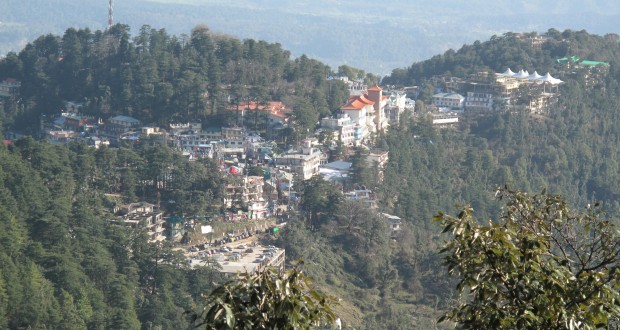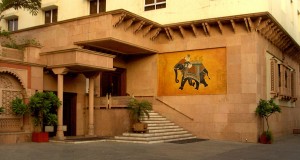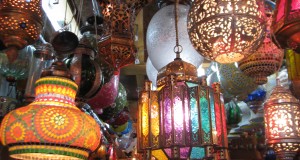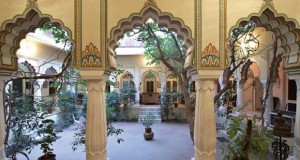Review Overview
Summary : Dharmsala is most pleasant from March to June, and from September to November. October is the best month of all—no rains, clear views, marvelous scenery.
like Dalhousie, this picturesque hill station lies on a spur of the Dhauladhar range, some 18 km (11 1/2 miles) north-east of Kangra. Surrounded by snow-capped mountains, deodar and pine forests, hills and tea gardens, it offers beautiful scenery and some lovely walks. Dharmsala began life as a typical British sanatorium, but suffered major tragedy in 1905 when levelled completely by an earthquake.
In 1960, it gained a new lease of life when adopted as the temporary headquarters of the Dalai Lama, Tibet’s spiritual leader. In 1959, after 8 years of trying to compromise with the Chinese in Tibet, he had fled—with 100 000 of his subjects—into exile in India. The journey was hard, and tens of thousands perished en route. Granted sanctuary by Pandit Nehru, some 3000 Tibetans made their new home in Dharmsala, on McLeodganj. Since then, the hill station has risen to international fame as the ‘Little Lhasa in India’. The Dalai Lama has become a major spokesman for world peace, with a central policy of perpetuating Tibetan religion and culture in Dharmsala itself. Here, children continue to be ordained as monks, senior lamas and reincarnates teach, and Tibetan medicine, education, arts and crafts are thriving once again.
Over the past 30 years, the Tibetans of Dharamsala have carved out one of the most successful stories of the rehabilitation of a people, vigorously maintaining their own identity whilst harmonising with their new environment. They see the crisis which Tibet has undergone (25 000 Tibetans imprisoned in Chinese jails, all but 45 of Tibet’s 6000 monasteries destroyed, only 1300 of their half-million monks and nuns still alive) as the result of bad karma from the past. In exile, their primary aim is to build up a collective fount of good fortune (or compassion) which will reinstate Tibet and oust the Chinese invaders.
Dharmsala is most pleasant from March to June, and from September to November. October is the best month of all—no rains, clear views, marvellous scenery. Whenever you come, bring some woollen clothing—it can get chilly at night.
ARRIVAL/DEPARTURE
Air The new airport at Gagal, 20 km (12 1/2 miles) below Dharmsala, is connected by Vayudoot with Bhuntar (for Kulu/Manali) andconnects by with Delhi.
Road Dharmsala has buses to Kulu/Manali (see p.244), to Pathankot (3 hours), to Dalhousie, to Delhi (13 hours) and to Shimla. The Delhi-bound buses leave at 5 am and 6 pm from Dharmsala, at 4.30 am and 5.30 pm from McLeodganj.
To get to Dharmsala from Delhi, either take the Jhelum Express from New Delhi (dep 9.40 pm, arr 7.55 am) or the Jammu Tawi Mail from (Old) Delhi (dep 9 pm, arr 7.25 am) up to Pathankot, or the popular 7.40 pm night bus (10 /11 hours) direct to Dharmsala from Delhi’s Interstate bus-stand, Kashmir Gate (gate 7a).
WHAT TO SEE
The hill station divides neatly into two separate parts. Lower Dharmsala (1250 m) is a dullish Indian-style township, with civic buildings, a 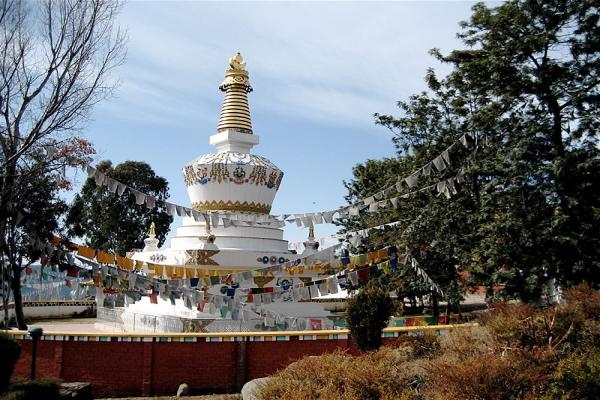 bazaar, a few hotels, the tourist office and the main bus-stand. Upper Dharamsala (1982 m) runs up from Forsyth Ganj to McLeodganj, and is anything but dull. McLeodganj has Tibetan temples, chatty monks, way-out travellers, curious curio shops, psychedelic restaurants, good music, second-hand bookshops, lots of ganja, and some interesting walks which people (eventually) get around to. For a few McLeodganj is the definitive freak centre of India—even more so than Manali, Goa or Pushkar. Travellers come here for enlightenment, Western food, alternative medicine, and dope—but mainly for rest and relaxation.
bazaar, a few hotels, the tourist office and the main bus-stand. Upper Dharamsala (1982 m) runs up from Forsyth Ganj to McLeodganj, and is anything but dull. McLeodganj has Tibetan temples, chatty monks, way-out travellers, curious curio shops, psychedelic restaurants, good music, second-hand bookshops, lots of ganja, and some interesting walks which people (eventually) get around to. For a few McLeodganj is the definitive freak centre of India—even more so than Manali, Goa or Pushkar. Travellers come here for enlightenment, Western food, alternative medicine, and dope—but mainly for rest and relaxation.
The Dalai Lama is a big draw, and if you make a serious application at the main temple, you may well get a personal interview. When resident, he often gives public addresses in the mornings, and if you miss these, there’s normally a video of him playing somewhere around town in the afternoons. Mcleodganj is in fact much more than a freak centre: it is one of the most pleasant, relaxing and, for many, spiritual places in India.
Regular buses ply between Lower and Upper Dharmsala from 6.30 am to 8 pm. After that, you’ve a choice of an expensive taxi or a long walk in the dark (over 1 hour up to McLeodganj, 45 minutes down to the lower town). Up in McLeodganj, you can hire mopeds or Suzuki 100 from Rent-a-Mobike in Buddha Temple Rd (tel 2246). A lot of people bike down to Manali, which takes around 6/7 hours return. Rent-a- Mobike is also a useful travel agency, handling bus/train reservations and flight confirmations.

